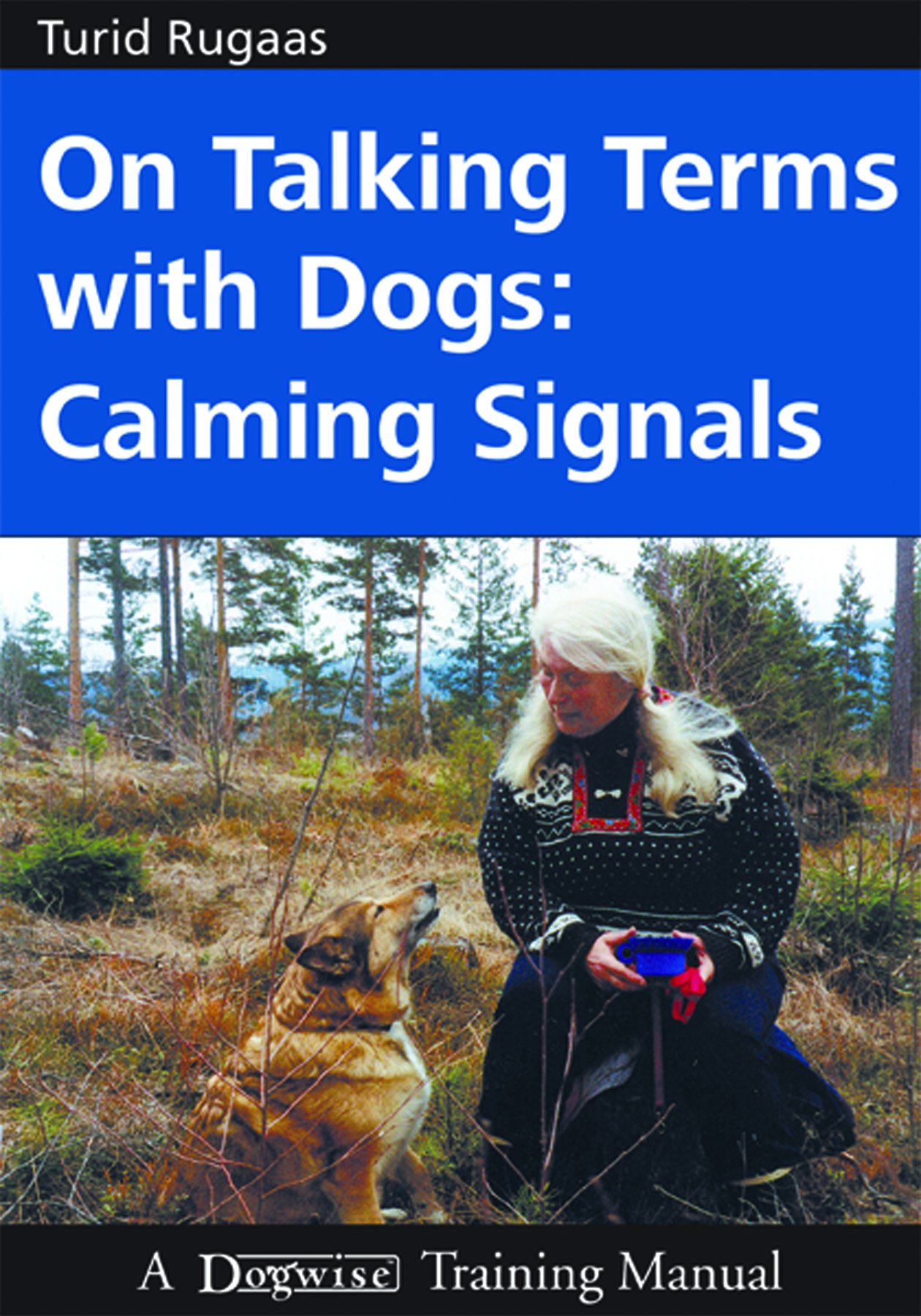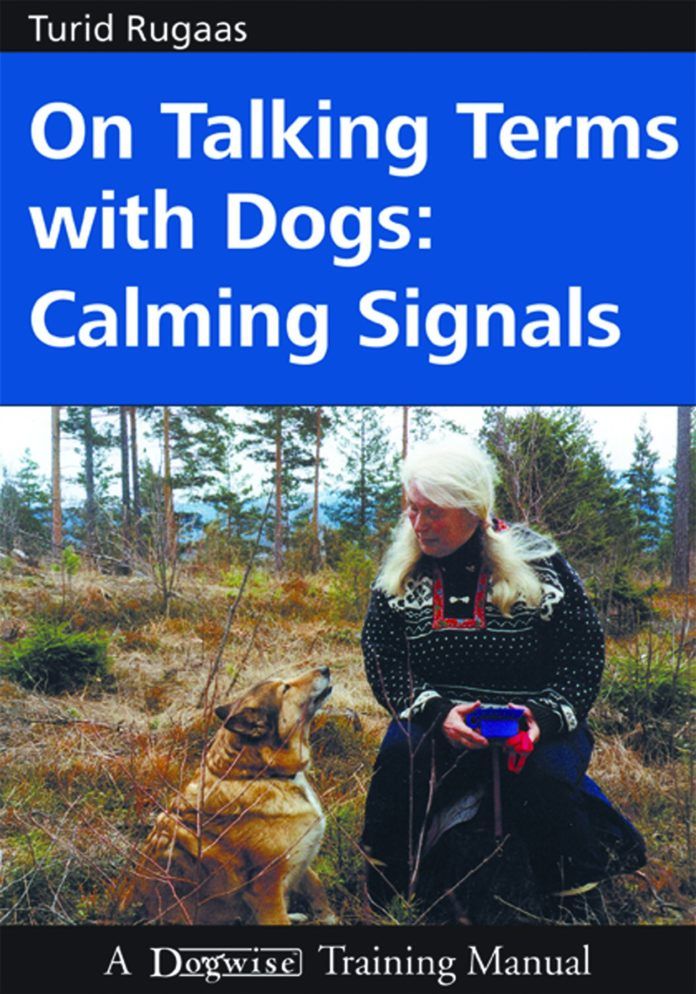
Because you’re in a rush, you call your dog in a somewhat irritated voice to come back to you once he’s had his walk off leash. But just to get your goat, it seems, he makes his way toward you slowly — and in a curve rather than a straight line, which only makes him take longer. And the more annoyed you get, the more slowly he goes. So of course you scold him once he gets to you.
Or perhaps you want your dog to do something, and his response is to act “stubborn,” or perhaps “distracted.” Maybe you’re yelling at him to comply one way or another and all he does is sniff the ground.
Your dog is not sassing you. Quite the opposite. He’s trying to diffuse the situation by using signals to calm you and ease the stress — both yours and his. He is engaging in conflict solving.
So explains Norwegian dog trainer Turid Rugaas in her wonderful book, On Talking Terms with Dogs: Calming Signals (Dogwise Publishing). It takes what you might find annoying about your dog’s behavior, or what you don’t understand, and allows you to become more respectful of your pet by teaching that what you may see as difficult or confusing behavior is your dog acting like the ultimate diplomat he is. Ms. Rugaas explains, too, that once you learn to use these signals yourself, you can give your dog a much less stressful life, one in which he knows you have his best interests — and his security — at heart.
Going back to your wanting to move on once your dog has had his walk, for instance: while your inclination may be to angrily let your pet know that he is displeasing you, perhaps moving your arms in the process, you’d be more likely to get the desired effect simply by slowing down. Between dogs, explains Ms. Rugaas, “movements that become slower, sometimes so slow that there is hardly any movement at all, have a very calming effect.” A dog who has started moving slowly is trying to help a perhaps somewhat aggressive dog, or person, to calm down. He is saying there is no need to be aggressive because no harm is meant.
Your dog will also recognize this signal coming from you. If you want to disarm him, getting him to come willingly so you can attach his leash and get him back to the car, move slowly. That will let him know that you’re not looking for any trouble, and he will be more inclined to come back to you.
Another signal dogs use is sitting down. When an anxious dog is approaching, a dog will sometimes sit to keep things calm. “Try sitting when your dog is stressed and cannot relax,” Ms. Rugaas advises. “Make your guests sit down if you have a dog that is not quite sure about strangers.”
Throughout the book, the author decodes dogs’ body language so that you can learn it for yourself with the purpose of treating your pet more kindly and ratcheting down his own anxiety when he is feeling overwhelmed — or sensing that a situation is getting away from him. Consider that a dog may do a lot of blinking at certain times. Why? He wants to appear more puppy-like to disarm an aggressive member of his species. If you have an aggressive dog threatening you, you can appear more puppy-like, too, using the same signal.
Ms. Rugaas tells the anecdote of a Rottweiler who starting growling at her. The growling became deeper if she so much as tried to walk slowly or even move her head (although turning your head to the side, she teaches, means you aren’t looking for any trouble). “All I could think of doing was blinking my eyes,” she says. “After a while the growling ceased, and…the Rottweiler’s tail started to wag a little….it took me only a very short time to become his friend.”
Learning dogs’ signals is a powerful way to get along with them better, and a good page for humans to take from their book, so to speak. “Conflict solving is a part of their heritage from their ancestors the wolves,” Ms. Rugaas points out, “and they read each other like we read books. It is a part of their survival instincts and pack behavior. We will never be as good at it as the dogs are, but we can…let the dog know we understand. We can give signals back to reassure them….and also reduce the risks of having scared, insecure, aggressive and stressed dogs.”





